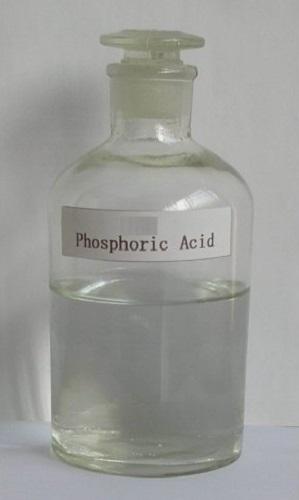Handling of Liquid Potassium Carbonate
Nov 15,2021
Liquid 47% potassium carbonate is typically shipped in drums, tank truck or rail car. It is also available by consignment as a barge load, shipped from the Armand Products’ plant in Muscle Shoals, AL. Each form of transportation has its own advantages.
The type of service you select will depend upon such factors as size and location of storage, rate of consumption, plant location and freight rates. Armand Products’ Technical Service staff is well qualified to survey your present facilities and recommend the economical form of transportation best suited to your particular requirements. The unloading and handling of 47% liquid potassium carbonate is simple. The freight for transporting this solution is higher than for the granular, anhydrous form. It is necessary to have enough tank capacity to accommodate a 16,000 gallon rail shipment or a 4,000 gallon tank truck shipment in addition to whatever level of inventory the customer maintains.

Placement of Railcar for Unloading
1 DOT requires setting the handbrake and blocking the wheels after the car is properly spotted.
2 DOT regulations also state that caution signs must be placed on the track or car to give warning to persons and switching crews approaching the car from the open end(s) of the siding. Caution signs must be left up until the car is empty and disconnected from the unloading line. Signs must be made of metal or other suitable material, at least 12 x 15 inches in size, and bear the words, “Stop - Tank Car Connected” or “Stop - Men At Work”.
3 Place derail attachments at the open end(s) of the siding, approximately one car length (50 ft.) away. Unloading Precautions 1 Entrust only responsible and well-supervised employees with the unloading of liquid potassium carbonate. It is recommended that a worker be present during the entire time that a car is being unloaded. 2 Provide workers with chemical splash goggles, hard hats, and rubber or rubber coated gloves to protect against eye and skin exposure. A safety shower and eyewash fountain must be located in the unloading area. 3 Unload only in daytime or when adequate lighting is available. Caution workers to exercise care.
4 Before starting to unload, make certain that the tank car and storage tank are vented and verify that the storage tank has sufficient capacity for the delivery.
5 Do not allow entry into the car under any circumstances.
6 If the tank car needs to be moved when partially unloaded, DOT regulations require disconnecting all unloading lines and replacing all car closures.
7 A suggested method for sampling is to withdraw intermittent samples from a 1/2 inch sample line fitted with a valve and 1/4 inch nipple which is connected to a vertical portion of the unloading line.
8 Armand Products’ liquid potassium carbonate is shipped in well insulated and specially lined tank cars. Linings in these liquid tank cars will withstand temperatures up to 225°F. To prevent damage to the linings, steam should not be added directly into the tank cars under any circumstances.
9 If compressed air (20 psig
max.) is used in the unloading
operations, inspect all fittings
for leaks or other defects
before unloading. Dome fittings
should be inspected carefully.
If leaks are found, suspend
unloading operations
until they are fixed.
Handling in Cold Weather
Under normal weather conditions, 47% liquid potassium carbonate will remain fluid. Since Armand Products’ liquid PotCarb is loaded hot into well insulated tank cars, this product should arrive at the destination in a liquid state. Under severe winter conditions, 47% potassium carbonate will begin to crystallize below 8°F. Although frozen material has not presented a problem in the past, the Technical Service staff is available for assistance should such a situation occur.
- Related articles
- Related Qustion
- Potassium carbonate: a food additive Apr 15, 2024
One of the uses of potassium carbonate is an additive in producing some foods. Additives are essential compounds for the production of various foods.
- Potassium carbonate: Preparation, application, quantitative method and toxicity Apr 3, 2023
Potassium carbonate is the primary component of potash and the more refined pearl ash or salts of tartar. It is prepared commercially by the reaction potassium hydroxide with carbon dioxide.
- Precautions in Handling of Potassium carbonate Nov 12, 2021
Potassium carbonate is the inorganic compound with the formula K2CO3. It is a white salt, which is soluble in water. It is deliquescent, often appearing as a damp or wet solid. Potassium carbonate is mainly used in the production of soap an
Phosphoric acid, also known as orthophosphoric acid or phosphoric(V) acid, is a weak acid with the chemical formula H3PO4. The pure compound is a colorless solid.....
Nov 15,2021Inorganic chemistryP-xylene appears as a colorless watery liquid with a sweet odor. Less dense than water. Insoluble in water. Irritating vapor. Freezing point is 56°F( 4-Xylene (p-xylene) is a colorless liquid ).P-xyle....
Nov 15,2021Organic Synthesis IntermediatePotassium carbonate
584-08-7You may like
Potassium carbonate manufacturers
- Potassium carbonate
-

- $0.00 / 1kg
- 2025-11-21
- CAS:584-08-7
- Min. Order: 1kg
- Purity: 98%
- Supply Ability: 1000
- Potassium carbonate
-

- $10.00 / 1ASSAYS
- 2025-11-21
- CAS:584-08-7
- Min. Order: 1ASSAYS
- Purity: 99%
- Supply Ability: 1 ton
- Potassium carbonate
-

- $99.00/ kg
- 2025-11-21
- CAS:584-08-7
- Min. Order: 0.0010000000474974513kg
- Purity: 99%
- Supply Ability: 5000






